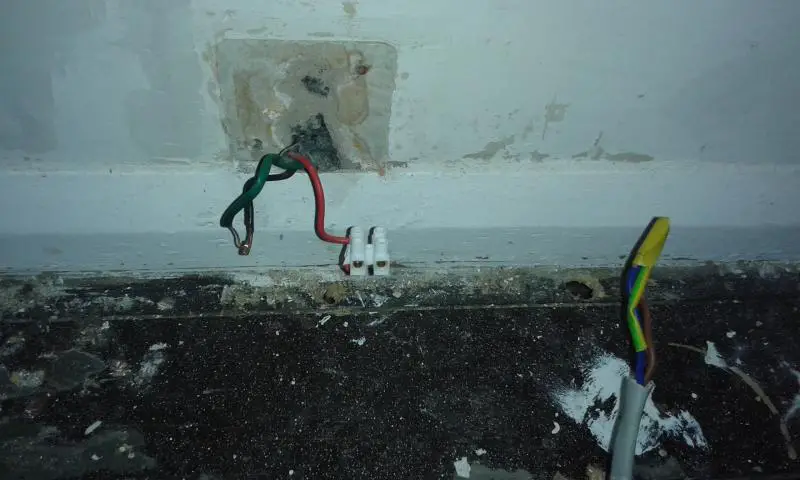Hi
if you look at the photo you can see some wires coming out of the wall (this is where a single socket used to be) , you will also see a hole in the floor board , this is where the second cable (with yellow insulation tape) came up from the floor board to join with the other cable in the socket (the cable used to run in front of the skirting board and into the socket from beneath)
The cable coming out of the wall is the live one, the other cable feeds another double socket.
I'm wondering how safe and legal this is?
And depending on the answer and i can proceed, am i able to have both these cables coming out the wall and joining into the socket ?
Thanks
if you look at the photo you can see some wires coming out of the wall (this is where a single socket used to be) , you will also see a hole in the floor board , this is where the second cable (with yellow insulation tape) came up from the floor board to join with the other cable in the socket (the cable used to run in front of the skirting board and into the socket from beneath)
The cable coming out of the wall is the live one, the other cable feeds another double socket.
I'm wondering how safe and legal this is?
And depending on the answer and i can proceed, am i able to have both these cables coming out the wall and joining into the socket ?
Thanks



